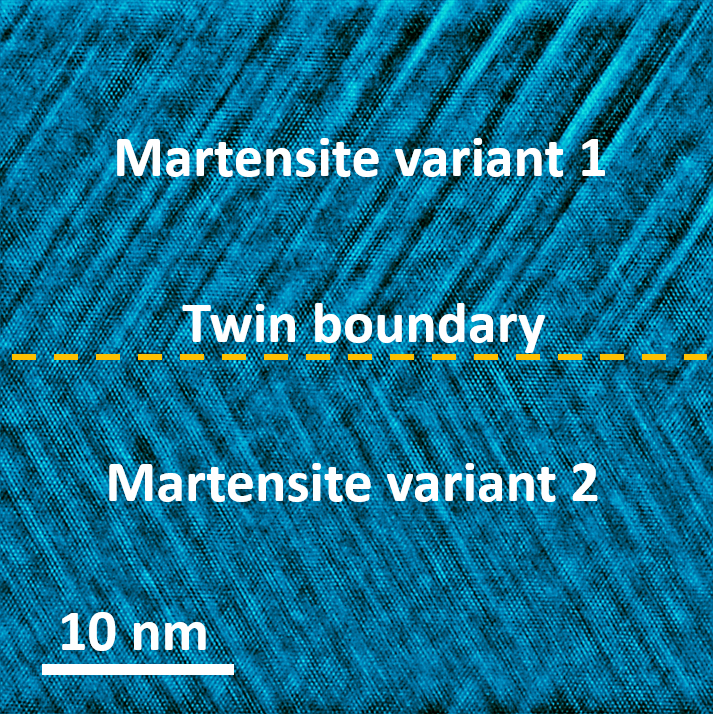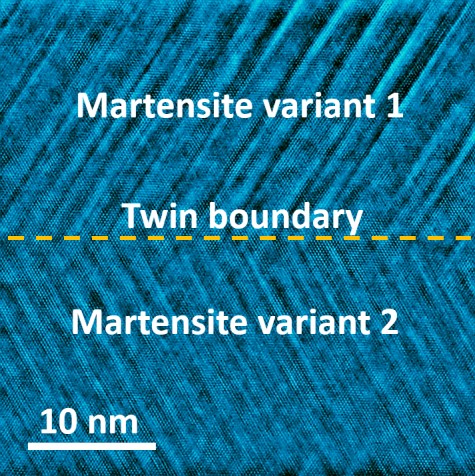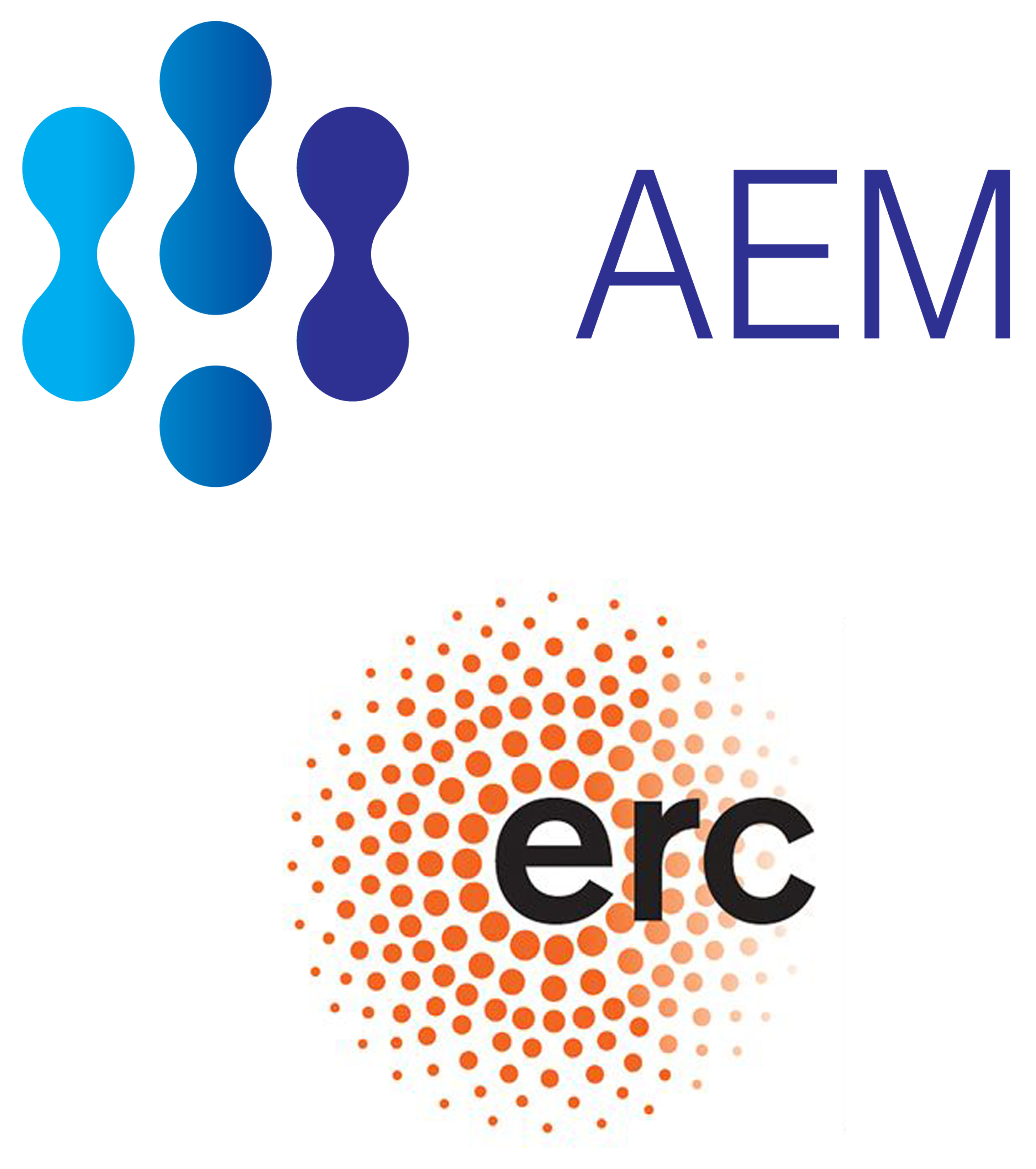TEM investigation of inverse first order magnetocaloric alloys
Project Members: Nagaarjhuna Arumuga Kani (Master Student), Leopoldo Molina-Luna (First Reviewer), Oliver Gutfleisch (Second Reviewer)
Description:
Magnetic materials that exhibit giant magnetocaloric effect can be used in magnetic refrigeration technology. Reversible martensitic phase transformation is at the heart of magnetocaloric materials (MCEs) such as the Ni-Mn based Heusler alloys. The presence of thermal hysteresis, which hinders the complete reversibility of martensitic phase transformation is often seen as a challenge in the development of cheap and efficient MCEs. A Transmission Electron Microscope (TEM) is a powerful instrument that can be used to understand some of the key intrinsic and extrinsic properties of MCEs, that contribute to the thermal hysteresis. The nucleation mechanism of austenite or martensite phase is very often studied using an in-situ optical or Kerr microscopy technique and correlated with the thermal hysteresis. But, the exact nucleation sites such as the twin boundaries, local chemical segregations, nano-precipitate or other secondary phases can be elucidated only using high resolution TEM images and spectroscopy data. In my master’s thesis work, the potential nucleation sites in Ni-Co-Mn-Ti and Ni-Mn-In-Fe alloys were identified. A careful examination of the nucleation sites in an in-situ TEM heating experiment can help us better understand the nucleation mechanism associated with the reversible martensitic transformation and thereby tackle thermal hysteresis in MCEs.





